Home Improvement
Tips for Maximizing Space in Your Bedroom

Home is a sanctuary. It’s the place we retreat to after a long day, the homely cocoon of comfort where we can be ourselves. Nothing represents this comfort better than bedrooms—our very own personal space to unwind and rejuvenate. Yet, often, these places of retreat can feel cramped and cluttered, affecting the overall aura and mood of the space. Suffice it to say, no one enjoys a disorderly bedroom that feels too small.
This article focuses on practical yet efficient ways to maximize your bedroom space whilst adding an undeniable charm to the room. So, if you are looking to make the best use of your bedroom space and transform it into a tranquil haven, keep reading.
Investing in Thoughtful Furniture Pieces
A thoughtful approach to furniture can radically change the dynamics of a bedroom. A bed frame that feels less structured and is a little bit more open can make your space feel more airy and spacious. One great option to achieve this look is a rattan bed frame which enhances the aesthetic appeal of a space, while simultaneously making it seem larger as opposed to a larger, boxier bed frame with a more rigid structure.
The rattan lines are woven to create a geometric pattern that elevates the design and also adds unique character to the bedroom. Crafting a definitive fusion of style and utilization, such furniture pieces are inventive solutions to space constraints. They are designed with an intrinsic functional component that effectively contributes to clutter-free living, reinforcing the concept of minimalism.
By incorporating lightweight furniture, you invest in making your rooms breezier. The key is to pay attention to what you buy. Instead of impulsively getting caught in the prettiness of a piece, take a moment to consider if it will satisfy your storage needs while blending seamlessly into the bedroom decor. The right furniture creates harmony by adding visual weight, thereby supporting the room’s interior design scheme.
Implementing Clever Storage Solutions
Having a small bedroom doesn’t mean you have to compromise on storage space. There are abundant clever storage solutions that contribute significantly to a clutter-free environment. As opposed to traditional storage solutions, these inventive options utilize overlooked spaces and embrace their underutilized potential. For instance, installing high shelves closer to the ceiling can create an illusion of height while taking advantage of unused areas.
Another worthwhile idea is utilizing the area under the bed for storage. It is a rarely used space with incredible potential to be transformed into a hidden storage compartment. Moreover, the implementation of hooks behind doors as additional hanging space is another intelligent use of the often-forgotten door surfaces.
Remember, the key to clever storage solutions is going against convention. Think vertical, not horizontal, look for spaces that haven’t been exploited before, and make every storage solution a part of your room aesthetic. Imagination is the only limit to such home improvement projects.
Exhibiting Art and Mirrors
Art pieces and mirrors are powerful decor elements that can magnify the appearance of a room. Art, in general, adds an element of intrigue and sophistication while mirrors are lauded for their ability to make any space look larger. A well-placed mirror can create the illusion of depth in a room, making it seem more expansive.
When placing mirrors, consider opposing a window. The mirror would then reflect natural light, brightening up the room and presenting an illusion of extended space. Also, displaying mirrors in sculptural groupings rather than individually can introduce a creative flair to the room.
On the other hand, displaying art can personalize the room. Choose art pieces that speak to you, as they contribute to creating a cozy and inviting atmosphere. Remember, bedroom decor should evoke positive emotions and resonate with the room’s mood, making the entire space seem bigger and more welcoming.
Using Light to Your Advantage
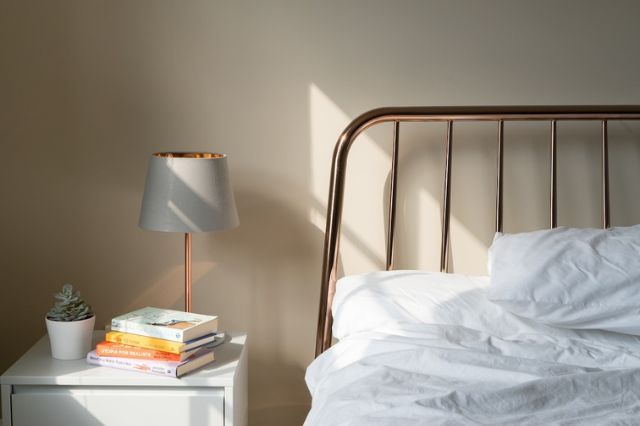

Lighting plays a pivotal role in setting the room’s ambiance. In smaller rooms, natural lighting is an essential element to make the space look bigger. There’s an abundance of lighting fixtures available in the market, making it easy for homeowners to pick one that complements their style and the room’s overall aesthetic.
Strategically placed lights can highlight the room’s features. For instance, illuminating the corners can make the room look bigger. Similarly, lights installed on walls can free up the floor space, providing an illusion of a spacious room.
To conclude, using lights to your advantage involves thoughtful placement and fixture selection. Well-executed lighting can transform your bedroom from cramped and gloomy to spacious and welcoming.
Being Smart with Color Choices
Color influences our perception. It plays a crucial role in making a room look larger or smaller. For small bedrooms, light, neutral hues are an excellent choice. They reflect more light and give an impression of spaciousness. Combining light walls with a darker ceiling can add depth to your room, creating the illusion of a larger room.
However, this doesn’t mean you have to restrict yourself to whites and beiges. Pops of bold color used in moderation can add interest and depth. Consider using a bold hue in accessories, bedding, or a single accent wall. This will add depth without overpowering the space.
Playing with colors to maximize your bedroom space involves a balanced combination of light and dark shades. A careful mix and match can create an appealing, larger-looking room. You can choose lighter decor pieces and colors in order to brighten up the room but don’t be afraid to experiment with color.
Maintaining Minimalism
Minimalism is a way of life. It’s the practice of living with less, thus limiting the amount of clutter in our lives. In terms of interior design, minimalism pertains to the reduction of furnishings and objects to the bare essentials, fostering simplicity and grace.
Adopting a minimalist lifestyle means placing less emphasis on “things” and more on experiences and relationships. By including only necessary items in our bedrooms, we allow the room to breathe and the available space to flourish.
All in all, adopting a minimalistic approach to bedroom design leads to a clutter-free environment. It simplifies the decoration process, promotes serenity, and importantly, aids in maximizing space.
Adding an Element of Green
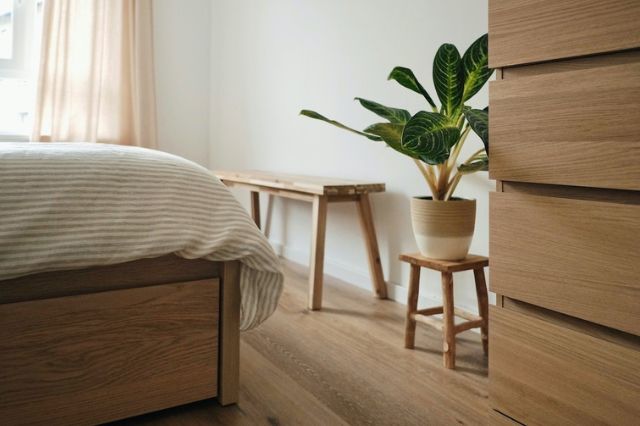

Adding indoor plants to a room can make it come alive. Greens can fill up empty corners, adding an interesting dimension to the room. Apart from their aesthetic appeal, plants have the potential to enlarge a room visually. If used correctly, they can act as effective space dividers.
However, when incorporating plants in bedroom decor, moderation is key. Overloading the room with greens can overpower the space, making it look smaller. Choose the right type of plant that complements your room’s decor. Also, consider the lighting conditions of your space, as certain plants require specific light conditions to thrive.
Ultimately, adding an element of green to maximize your bedroom space adds life to the room. Plants can serve both functional and aesthetic purposes, thereby creating an environment that’s fresh and spacious.
Overall, there are numerous ways to maximize space in your bedroom. It all boils down to utilizing the available space efficiently and capitalizing on various design elements to streamline functionality. Following these tips can transform your bedroom into a visually larger and well-organized space.
Home Improvement
Transform Your Home with Contemporary Doors Interior: A Modern Aesthetic
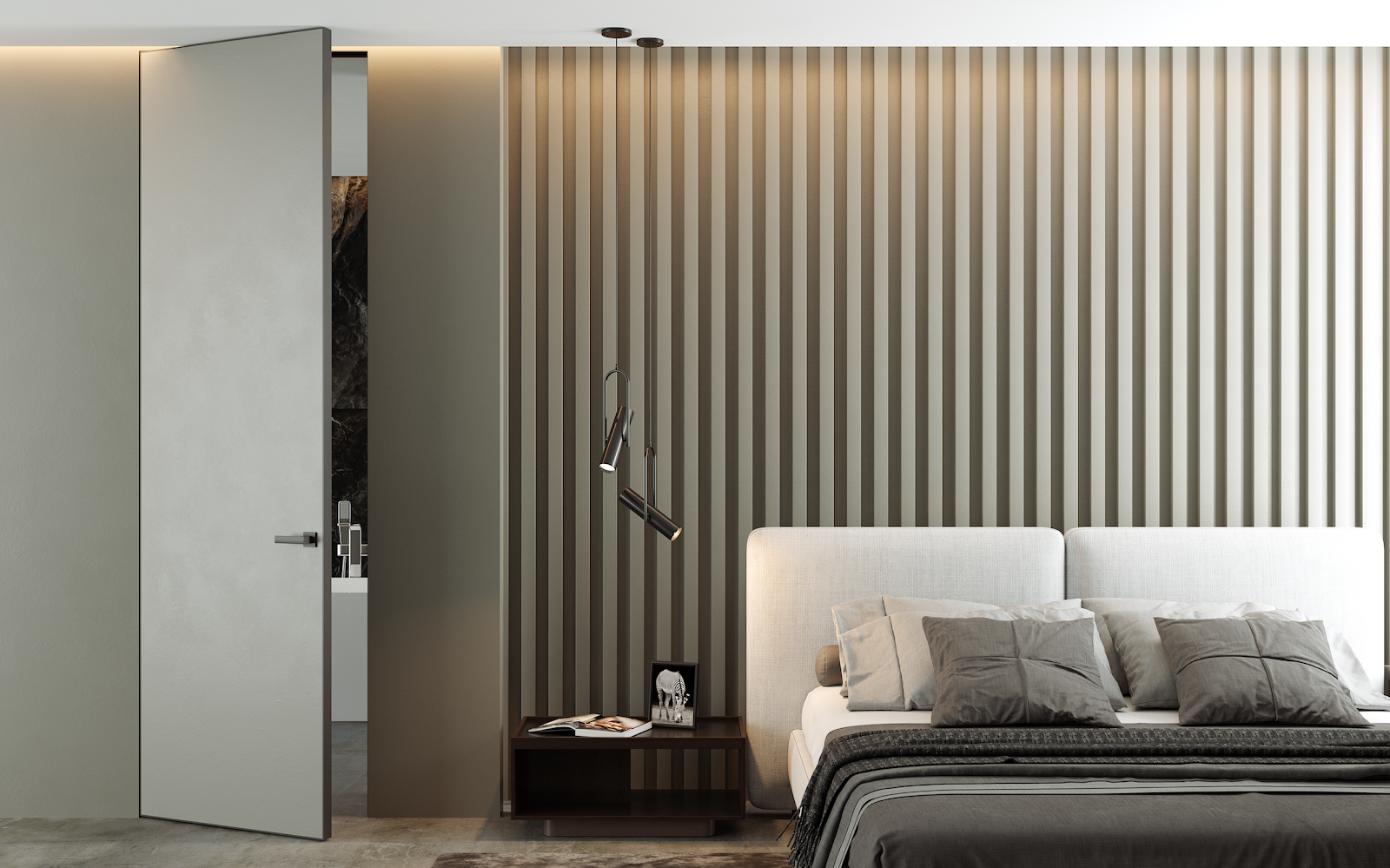

Choosing contemporary doors interior is a vital aspect of modern home design, offering both functionality and a stylish touch. These doors are more than just functional elements; they can significantly enhance the look and feel of your living spaces.
In this guide, we will explore different types of contemporary interior doors, their benefits, and what to consider when selecting the perfect doors for your home. We’ll also highlight TrioDoors door stores in Toronto, a leading provider of high-quality interior doors.
Exploring Types of Contemporary Interior Doors
Contemporary interior doors come in a wide range of styles and materials. Here’s a look at some of the most popular options:
- Panel Doors
- Modern Twist: Traditional panel doors updated with clean lines and modern materials.
- Variety of Configurations: Available in multiple panel configurations, such as two, four, or six panels.
- French Doors
- Elegance and Light: Glass panels allow for the flow of natural light, enhancing the sense of space.
- Contemporary Glass Options: Choose from frosted, tinted, or clear glass for a modern touch.
- Sliding Doors
- Space-Saving: Slide along a track, perfect for areas where space is limited.
- Modern Aesthetic: Commonly used in modern homes for closets, bathrooms, and as room dividers.
- Pocket Doors
- Hidden Design: Slide into the wall cavity, making them virtually invisible when open.
- Ideal for Small Spaces: Great for rooms where a swinging door would be impractical.
- Barn Doors
- Rustic Meets Modern: Mounted on a sliding track, combining rustic charm with contemporary design.
- Statement Piece: Acts as both a functional door and a focal point in any room.
Key considerations when choosing contemporary interior doors
- Material Selection
- Wood: Classic look, customizable with various finishes and stains.
- MDF (Medium-Density Fiberboard): Smooth, easy to paint, and more affordable than solid wood.
- Glass: Perfect for allowing light flow while maintaining a modern aesthetic.
- Metal: Durable, often used in industrial or modern designs.
- Style and Design
- Consistency: Ensure the door style matches your home’s overall design theme.
- Functional Needs: Consider the specific purpose and requirements for each door.
- Size and Measurements
- Standard vs. Custom Sizes: While most doors come in standard sizes, custom options are available for unique spaces.
- Accurate Measurements: Proper measurement of the door frame is crucial to avoid fitting issues.
- Hardware and Accessories
- Handles and Knobs: Choose hardware that complements the door style and home decor.
- Hinges and Tracks: Ensure hardware is durable and functional for the chosen door type.
- Installation
- Professional Installation: For best results, consider professional installation.
- DIY-Friendly Options: Some doors are designed for easy DIY installation.
Selecting the right contemporary doors interior is essential for achieving both functionality and a modern aesthetic in your home. From sleek flush doors to elegant French doors, the choices are vast and varied. When choosing interior doors, consider factors such as material, style, size, and installation requirements to ensure they meet your needs.
For quality and reliability, purchase your contemporary interior doors (https://triodoors.ca/interior-doors/) from reputable suppliers like TrioDoors door stores in Toronto. It offers a wide selection of high-quality doors that cater to various styles and budgets, ensuring you find the perfect doors for your home.
Enhance your living space today with the ideal contemporary doors interior!
Home Improvement
Best Place to Buy California Shutters in Toronto and Things to Know
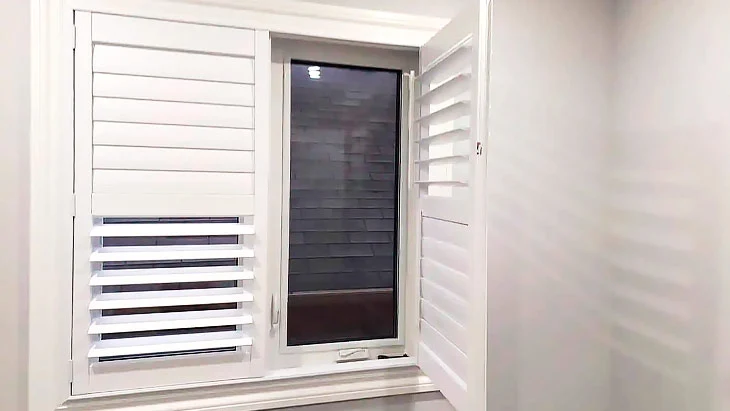

In Toronto with its population density, a large number of residents do care about privacy. This is why Vinyl Light gets lots of requests for California shutters Toronto area.
What Are California Shutters
California shutters are a form of interior window covering that is usually made of wood or composite materials. They are sometimes referred to as plantation shutters or just shutters. To adjust light and privacy, they have large slats that may be tilted open or closed.
These shutters, which are installed inside window frames, are renowned for their strength, beauty, and capacity to improve sound absorption and insulation in a space. They give windows in homes and businesses a traditional, refined appearance, and they are well-liked for their timeless design and usefulness.
Features of California Shutters
California shutters’ primary advantages are:
- Beauty. They provide any area with a classic, ageless look that enhances its overall charm.
- Light control. California shutters let you control the amount of natural light that enters your room, giving you freedom and ambiance.
- Privacy. Because they offer such remarkable solitude, they are ideal for baths and bedrooms.
- Energy efficient. By keeping your home warm in the winter and cool in the summer, the insulation they offer may help you save money on your energy bills.
- Resilience. California shutters are robust and durable.
- Easy maintenance. They are easy to maintain, requiring only the occasional wipe down with a damp cloth.
- Increase the value of your property. Installing California shutters could increase the value of your home because many purchasers believe them to be a desired feature.
California vs. Plantation Shutters
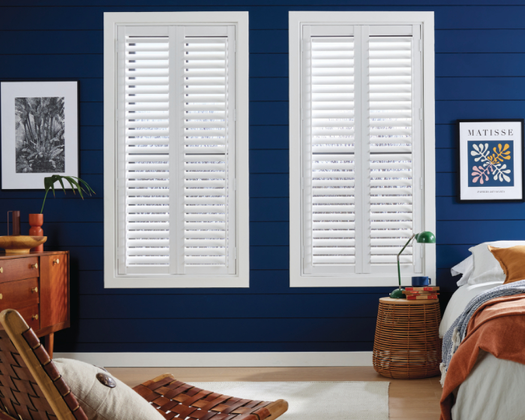

Depending on your unique requirements, tastes, and the design of your house, you can choose between plantation and California shutters.
- Window size. California shutters may look more proportionate on smaller windows and larger windows. Plantation shutters can improve the appearance of larger windows.
- Room style. Take into account the room’s general design and aesthetic. Plantation shutters complement modern or contemporary decor, while California shutters work well with traditional décor.
- Budget. Since plantation shutters may cost more, it may be a determining factor.
- Needs for light and privacy. Consider the degree of light and privacy control that you require. Both types of shutters offer good privacy.
Home Improvement
Troubleshooting and Repair Guide for a Noisy Washing Machine


Washing machine repair is a crucial skill for homeowners seeking to maintain the functionality of their household appliances. One common issue that plagues many households is a noisy washing machine.
The incessant clunks, bangs, or rattles emanating from the appliance can be both annoying and indicative of underlying problems. Luckily, resolving the noise problem typically requires simple repairs achievable with basic tools and some basic knowledge.
This thorough guide will guide you through a systematic troubleshooting and Whirlpool washing machine repair process, guaranteeing your washing machine operates smoothly and silently for an extended period.
Understanding the Source of the Noise
Prior to delving into the repair procedures, it is crucial to pinpoint the origin of the noise. Various factors, including loose components, worn-out parts, or incorrect installation, can contribute to the noises emanating from washing machines.
Take the time to carefully listen to the machine during different stages of the washing cycle, noting when the noise occurs and any specific patterns. This initial assessment will help you pinpoint the root cause, making the repair process more efficient.
Step 1: Inspecting for Loose Items
Begin the troubleshooting process by checking for loose items inside the washing machine drum. Coins, buttons, or small objects may have become lodged in the drum’s crevices, causing unusual noises during the spin cycle. Carefully inspect the drum, removing any foreign objects that may be contributing to the racket.
Step 2: Tightening Loose Fasteners
Noisy washing machines often result from loose nuts, bolts, or screws. Employ a wrench or screwdriver to secure any apparent fasteners on the machine, with specific attention to areas like the drum, motor, and support brackets. Ensure all components are securely fastened to eliminate unnecessary vibrations and noises during operation.
Step 3: Checking for Damaged Drum Bearings
Worn-out drum bearings are a common culprit for persistent washing machine noise. To inspect the bearings, manually rotate the drum to feel for any roughness or resistance. If the bearings are damaged, they may need replacement. We will lead you through the steps to safely remove and replace these essential components.
Step 4: Balancing the Washing Machine
Uneven distribution of the load can result in excessive noise and vibration. Verify whether the load is evenly distributed within the drum. If not, redistribute the clothes to achieve a balanced load. Additionally, ensure that the washing machine is level on the floor. Adjust the leveling legs as needed to eliminate any rocking or tilting during operation.
Step 5: Examining the Drive Belt
A loose or damaged drive belt can contribute to a noisy washing machine. Examine the belt closely for any indications of wear, cracks, or looseness. If any issues are detected, follow our guide to safely replace the drive belt, ensuring smooth and quiet operation.
Step 6: Lubricating Moving Parts
Proper lubrication is essential for reducing friction and minimizing noise in moving parts. Apply a suitable lubricant to components such as the motor bearings and pulleys. This simple step can make a significant difference in the overall noise level of your washing machine.
Step 7: Evaluating the Shock Absorbers
Washing machines are equipped with shock absorbers to dampen vibrations during the spin cycle. Inspect these elements for any visible signs of wear or damage. If necessary, replace the shock absorbers to restore their effectiveness in reducing noise and vibration.
Safety Precautions
- Turning Off Power and Water Supply Before Any Repair:
- Power Supply: Disconnect the washing machine from the electrical outlet to prevent the risk of electric shock during repairs.
- Water Supply: Shut off both the hot and cold water supplies connected to the washing machine to prevent potential water leakage during maintenance.
- Handling Washing Machine Components with Care During Troubleshooting:
- Caution with Moving Parts: Exercise caution when manually rotating the drum or handling moving components to prevent injuries.
- Wear Protective Gear: Depending on the nature of the repair, it is advisable to wear suitable protective gear, such as gloves or safety glasses.
- Secure the Machine: If required to tilt or move the washing machine, ensure it is properly secured to prevent tipping or falling.
- Follow Manufacturer Guidelines: Adhere to the guidelines and instructions provided by the manufacturer for the safe troubleshooting and repair processes.
By incorporating these regular maintenance practices and adhering to safety precautions, you can not only address existing noise issues but also prevent future problems, ensuring the longevity and efficient performance of your washing machine.
Regular Maintenance Practices
- Tips for Preventing Future Noise Issues:
- Load Balance: Ensure that the laundry load is consistently distributed within the drum, preventing imbalance during the spin cycle.
- Check Pockets: Before loading clothes, ensure there are no loose items such as coins, buttons, or small objects that could cause noise.
- Proper Installation: Make sure the washing machine is leveled and stable on the floor, minimizing vibrations during operation.
- Use the Right Detergent: Follow the manufacturer’s recommendations for the type and amount of detergent to prevent excessive suds that may contribute to noise.
- Inspect Hoses: Regularly examine both the water inlet and drain hoses for any kinks, leaks, or damage that could result in noise or operational problems.
- Cleaning and Maintaining the Washing Machine for Optimal Performance:
Routine cleaning is vital to prevent the accumulation of dirt, debris, and detergent residues, which can impact the performance of your washing machine. Consult the table below for a detailed guide on cleaning and maintaining various parts of the washing machine:
| Component | Cleaning Procedure | Frequency |
| Detergent Drawer | Remove and clean the detergent drawer. | Monthly |
| Door Seal | Use a damp cloth to wipe the door seal, eliminating dirt and mold. | Monthly |
| Drum | Initiate a hot water cycle with vinegar to effectively eliminate any residue buildup. | Every 2-3 months |
| Filter/Pump | Clean the filter or pump to remove lint and debris. | Every 3-6 months |
| Exterior | Wipe down the exterior with a mild detergent solution. | As needed |
Successfully repairing a noisy washing machine involves a systematic approach to identify and address the root cause of the issue. By adhering to these detailed instructions, you can rejuvenate your washing machine, restoring it to optimal performance.
This process will effectively eliminate disruptive noises, ensuring the longevity of your appliance. Regular maintenance and timely repairs will not only enhance the efficiency of your washing machine but also contribute to a quieter and more peaceful laundry experience.
-



 Captions3 years ago
Captions3 years ago341 Sexy Captions to Fire Up Your Instagram Pictures
-



 Captions3 years ago
Captions3 years ago311 Night Out Captions for Instagram and Your Crazy Night
-



 Captions3 years ago
Captions3 years ago245 Saree Captions for Instagram to Boost Your Selfies in Saree
-



 Captions3 years ago
Captions3 years ago256 Best Ethnic Wear Captions for Instagram on Traditional Dress
-



 Captions3 years ago
Captions3 years ago230 Blurred Picture Captions for Instagram
-



 Captions3 years ago
Captions3 years ago275 Deep Captions for Instagram to Express Your Thoughts
-



 Quotes3 years ago
Quotes3 years ago222 Nail Captions for Instagram to Showcase Your Fresh Manicure
-



 Captions3 years ago
Captions3 years ago211 Laughing Captions for Instagram | Laughter Is the Best Medicine







